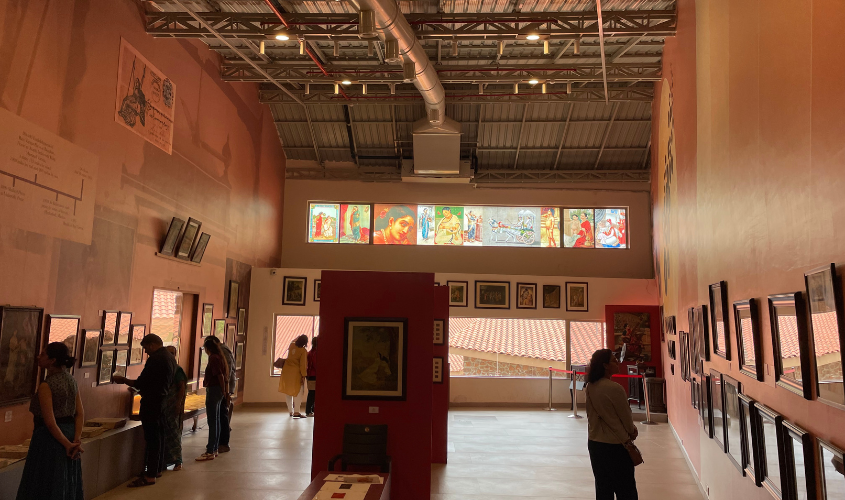There used to be a time when collections of art and memorabilia would remain hidden in private homes or perish with time down the generations. Today, the modern collector in India is much more confident and pragmatic about their legacy. Family will not always be interested in taking care of your collection after you’re gone. The ease of purchase of land, rise in domestic tourist footfalls and finding investors

Recently launched in Pune, the Zapurza Museum of Art and Culture showcases the private collection of well known jeweller, Ajit Gadgil of PNG and Sons Ltd. One would have expected it to be a collection of just jewellery but Gadgil has been collecting paintings of modern masters, film memorabilia, lithographs, vinyl records, vintage textiles, ancient traditional lamps, etc. Since the collection is a mix of everything, the task is to curate multiple themes into the exhibits. “For a collection as eclectic as this, it’s important to build a story around each category and add perspective for the visitors. Otherwise it can get overwhelming”, says museum curator Raju Sutar.
The name Zapurza aptly defines Gadgil’s abstract nature of his collection. It’s a word which was coined by the father of modern Marathi poetry, Keshavsut. In his poem, Zapurza means an undefined state of ecstasy experience by a creative mind. “I started collecting for myself, and over the years, the collection grew in variety. People usually don’t get see such a range of art & culture under one roof. The museum is my way of giving back to the society,” opines Gadgil.
The collection is impressive not just in terms of various genres but in the nature of pieces as well. There are original lithograph stones and prints of Raja Ravi Varma which further expand to his influence in advertisement posters and consumer products such as match boxes, biscuit tin boxes, postcards, annual calendars, etc. In the film memorabilia section, there’s an old functional turn table to experience how the 78rpm records would sound when played over the needle. The gallery of modern art has paintings of all the modern masters including Husain, Raza, Souza, Tyeb, Jamini Roy. The unique ‘paithani’ saree of Maharashtra can be found in the museum as well, but these pieces are the ones woven in gold thread dating back to about 200 years. The saree collection started primarily because people would bring in these heirlooms to his jewellery shop to burn the saree down and extract the gold. But Gadgil chose to buy them instead and preserve them for his collection. The jewellery section is exquisite with 150 years old handmade pieces in silver and gold. A lot of the traditional Maharashtrian jewellery is inspired by local crops and agriculture. The intricate filigree work in temple pieces, puja thali (prayer platters) and gulab-dani (rose-water bottle) can be difficult replicate today because artisans of that skill are no longer alive!
Located right next to the National Defence Academy in Khadakwasla, nestled in the hills along the Mutha river, the museum is spread across 7.5 acres of land with 8 galleries, an open air amphitheatre at the river banks and a cafeteria to enjoy Maharashtrian food with the hills view. Unlike traditional museums, today’s contemporary museums choose to be called art centres where the journey doesn’t end with the collection. It opens up an ongoing dialogue on creativity. “The campus is also a facilitator for all art related activities. People can use our facilities to practice, perform and showcase their talent”, says Gadgil. Which is why some of the galleries and auditorium are open for booking contemporary art shows, workshops and performances. An attempt to connect the dots of creative spaces without the barriers of. Truly, a Zapurza frame of mind.
Sahar Zaman is Consulting TV news editor and Founder, Hunar TV.

